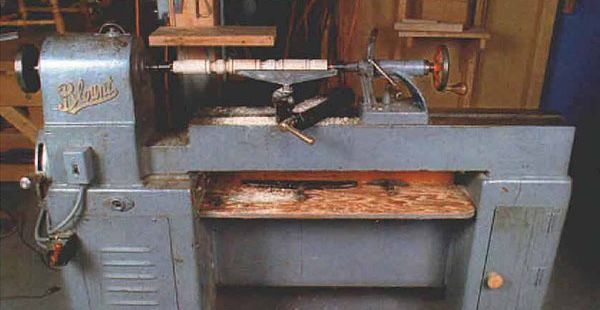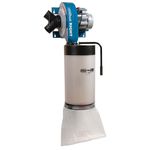Basic Guide to Buying a Lathe
What to look for and what to avoid when purchasing a new or used machine
Synopsis: As with buying any tool, it’s the economies you later regret, not the extravagances. Professional turner Jon Siegel tells you what to look for: The height and structure of the bed are critical, and the tool rest should be sturdy. The tailstock needs a large base, and the headstock should provide solid support. Speed control and horsepower are important, and the stand has to be stout enough to withstand vibration. Siegel also explains how to evaluate a used lathe. Which is right for you?
I earn my living by turning wood, and I’ve been a turner for the last 30 years. I spend most of my time making turnings for furniture and architectural applications, but I also lecture and give demonstrations at woodworking clubs, conferences and classes. One of the questions I am most frequently asked is, “What kind of lathe should I get?” This is akin to asking, “How long is a piece of string?” But to help my students, I have prepared a checklist of things to look for in a lathe.
When buying a lathe, it is the economies that you will regret, not the extravagances. You never will be able to produce fine work on a lathe that is poor in design and light in weight. I generally suggest getting the heaviest lathe that you can manage, fiscally or physically. But beyond this you must evaluate the most important parts of a lathe: the bed, the tool rest, the tailstock, the headstock, the motor and the stand.
Finally, the type of turning you will be doing has a crucial bearing on what to look for in a lathe. If you will be turning mainly bowls, you need the ability to turn at low speeds and a machine able to absorb the vibration of turning large, possibly irregularly shaped objects. If spindle turning is your game, a wider range of easily adjusted speeds is desirable. A longer bed may also be desirable, especially if you plan to turn long pieces, such as bedposts.
The height and structure of the bed are critical
While mass is the most important factor in a lathe’s stability, the rigidity of the bed runs a close second. The most important feature is the height of the bed structure: A lathe that will turn a maximum diameter of 12 in. with a length capacity of 40 in. should have a bedstructure height of at least 5 in., excluding its feet.
The design of the bed is more important than the material it is made from. In the old days, when you ordered a wood-turning lathe, you made your own bed out of wood. This remains a good idea. You can make the lathe bed as long as you want, and a dense hardwood with ample bed height provides plenty of mass. The hold-down bolts on these lathes are somewhat less convenient than those on metal beds, because you mostly reach underneath to adjust them, which is one of the reasons why my first choice is a flat-topped cast-iron bed.
From Fine Woodworking #149
For the full article, download the PDF below:
Fine Woodworking Recommended Products

Veritas Precision Square

Hedgehog featherboards

Rockler Dust Right 1250 CFM





















Log in or create an account to post a comment.
Sign up Log in